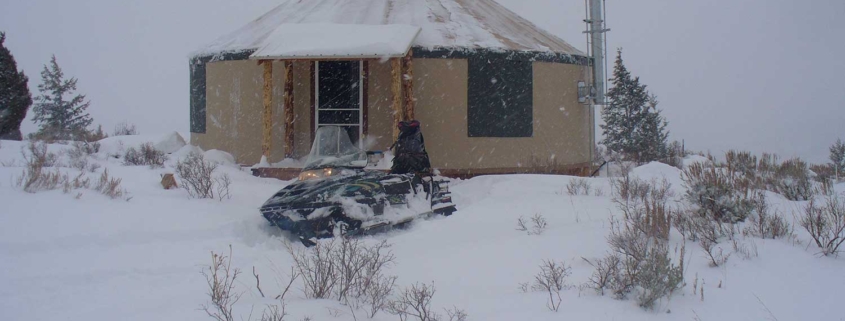Amongst the more eco-friendly structures available, yurts have become very popular in the last few years. And you may be wondering, are year-round yurts an option?
Do people live in yurts permanently?
The answer to this is, definitely yes!
The yurt has been used as a permanent dwelling for thousands of years by the nomadic tribes on the Asian steppes. It is a proven design that can withstand high winds, extreme cold and snow as well as intense heat.
Yurts have the added benefit of being portable and relatively lightweight. So, you can move them from one site to another without too much problem.
What is it Like Living in a Yurt?
Most families who live in yurts absolutely love them. They are extremely popular with younger couples just starting out. The attraction of constructing an affordable, eco-friendly structure makes it an ideal option if you are looking for off-grid housing too.
However, the building authorities in many states are recognizing the value of yurts beyond their use as holiday accommodation and see them as an alternative to conventional building methods. Local building codes can accommodate yurts and building inspectors are becoming more familiar with these types of structures.
The beauty of yurt construction is that you can make them as basic or as luxurious as you please. With sizes varying from as small as 12 feet in diameter to over 30 feet, there is an option for most budgets.
Manufacturers provide yurt kits and advice on how to build them. But professional help is also available to make building your yurt a breeze.
So what are the positives and negatives of living in a yurt?
Pros
You get to live close to nature.
Living seasonally, meaning that you experience the warmth of summer and the cold in winter, is a healthy option that puts one more in tune with nature. It’s not to say that you must be uncomfortable, but you definitely notice the weather changes more when living in a yurt.
Thin walls allow you to experience the wind and rain in a way that living in a wooden or brick structure just doesn’t allow you.
Waking up and going to sleep to the sound of animals, birds and insect sounds become part of your daily existence. Yurt owners report that in a few short days they feel a definite reduction in stress and can relax in a more natural setting.
Yurts are cost-effective.
You can buy a yurt for between $20-30K as a complete building system. This gives you anywhere from 300 sq. feet to as much as 1,000 sq. ft of usable living space.
Some yurt owners have managed to build their yurts for as little as $2,000 using recycled materials.
Easy to Build
Using a kit and a few helping hands, you can have a yurt up and functional in a few days. It’s eminently suitable for DIY construction and there are lots of resources available to help.
Low-impact
Yurts can be constructed to stand on a foundation of concrete blocks or screw piles and are easily removable. You can sell it and remove it and the land will return to its original state in a short time.
Easy to Move
Yurts are lightweight, so it’s easy to move them by dismantling them and packing them into a trailer. This makes them perfect for off-grid living.
Cons
Insulation
Generally, the insulation provided by some manufacturers is poor. With low energy efficiency, it pays to deal with a reputable manufacturer who understands the area where you plan to erect your yurt. Fitting your yurt with additional insulation helps as well as installing a wood stove or other heating source makes for a very comfy home.
Round shape
As most furniture and fittings are designed for straight lines, the round space can be a challenge. However, clever design and out-of-the-box thinking have resulted in many very attractive homes with unique interior design features.
Cladding is Vinyl
Off-gassing of vinyl can be an issue for some and structures located in a fire ecology (pine, spruce, fir trees) are susceptible to fire with the potential for fumes that are toxic if the structure catches fire. Waterproof canvass is an alternative. But vinyl is a long-lasting material that resists UV damage and can last for many years.
People have been living in yurts for thousands of years and they offer a unique structure in which you can get closer to nature. If a more natural, eco-friendly home appeals to you, then year-round yurts are a viable option for any family.


